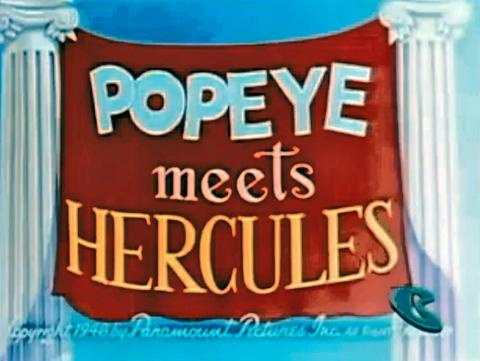Chiara Sulprizio
April 14, 2023
Chiara Sulprizio is a Senior Lecturer in the Department of Classical and Mediterranean Studies at Vanderbilt University. Her scholarly work examines ancient attitudes and ideas about gender and sexuality, especially as they are depicted in comedy, satire, and other humor-based literary genres. She is also interested in the reception of the Classical past in modern comics, graphic novels and animation, and is the creator of “Animated Antiquity: Cartoon Representations of Ancient Greece and Rome.” She recently stepped down as Chairperson of the Contingent Faculty Committee and first contingent faculty member of the SCS Board. She lobbied for this position for a contingent faculty member on the executive board, established a contingent faculty grant program, organized mentoring, launched a series on the SCS blog, and co-organized several SCS roundtables.
Discovering the ancient world: Languages, comedy…and animation?
Like most children of the 80s, I became a fan of Greek mythology because of the film Clash of the Titans, which we had on a VHS tape that also contained Jason and the Argonauts. Then, when I was in high school, I studied abroad for a year in Spain. There it was only possible to take “puras letras” or “puras matematicas,” so, naturally, I chose the former. I took Latin and Greek from a wonderful woman named Maria Teresa, who inspired me with a love for antiquity. When I went off to college, I decided to continue my studies by majoring in Classics.
My passion for animation also emerged out of my 1980s childhood, but I really became interested in it from a scholarly perspective in the last seven years due to my teaching. Starting out, I had a collection of about ten animated film clips that I was using in my classes on a regular basis. Animation is an ideal medium for teaching for a few reasons: first, the films are typically short or easily able to be excerpted; second, they have a lot of appeal to youth audiences; and third, they present ideas with vivid imagery and synthesize difficult concepts in memorable ways. After a while, I decided I needed an easily accessible place to house this collection of clips, and thus the Animated Antiquity archive was born!
My interest in comedy and satire, however, began from a much sadder time. When I was in my second year of grad school, I was leaning toward working on Roman funerary ritual, but then 9/11 happened. It was so incredibly traumatic that I decided I could not spend my life working on death. I said to myself, “What is the opposite of death? What will give me life and bring me joy?” And the answer at that moment for me was laughter. So I turned my attention to Greek comedy and theories of humor.
Navigating an uncertain career in Classics
Such joy was important as I navigated the job market. I finished my PhD in the spring of 2007, just before the Great Recession. This deeply affected my outlook and provided unexpected challenges. Until Covid, I don’t think there was a worse time to finish a degree. Job searches were canceled left and right that fall, and the subsequent years were filled with uncertainty about the job market. Those features have never fully gone away. Before then, there was always a vague (if misplaced) notion that, eventually, everybody would land a job. It was quite a shock to me to have that veil ripped from my eyes, as it were, and to realize that “the way things were” was never coming back. During this period, I also married a fellow Classicist, so there were double the feelings of failure, anger, confusion, and despair as we both worked in contingent positions and tried to secure tenure-track jobs for seven long years.
Finally, in 2014, I gave up on academia altogether. The clock had run out on my visiting position and I decided to move to a new city and start over. Almost immediately, my father passed away. I spent the next two years trying to reinvent myself and exploring all sorts of different career paths as I grieved and processed the loss and change I’d experienced. It was a hard time. I started my own business, and I was just about to take things to the next level when I got a call from Vanderbilt about a contingent teaching position. I frequently talk about this experience in terms of a codependent relationship. Here was my on-again, off-again boyfriend, Academia, asking for me to come back to him, promising that this time things would be different, maybe even better.
I really had to think through my decision. I had become a different person by that point — I’d let go of so many of my hopes about the fulfillment I would get out of an academic job. All the failure I had experienced had made me much wiser and stronger, but also world-weary. I realized that a job in academia was just that, a job, one that I could give as much or as little as I wanted, one that I could take or leave if it wasn’t suiting me. It was not my whole life or my entire identity anymore.
Ultimately, I decided to take the position, mainly because I never stopped loving the field of Classics. Since I’ve returned to the field, I’ve made a conscious effort to never let go of the perspective that all the distance, difficulty, and time away afforded me. I try to set healthy boundaries and to maintain a realistic sense of what I should undertake and what I can accomplish. I don’t always succeed, but I’ve done my best to let this approach guide me in everything I do when it comes to my current academic work.
Adapting to contingency and seeing a future
It is often hard to know much about what’s happening with contingent faculty. At Vanderbilt, we are not organized or unionized. Little effort has been made at connecting us to one another or acknowledging us as a group with shared interests. This should come as no surprise, as there is little incentive for university leaders to facilitate bonds between non-tenure-track faculty members. Despite the fact that around half of the faculty (in the U.S.) now work off the tenure track, we are still something of an afterthought. It seems that most colleges and universities want to continue to pretend that contingent faculty are an anomaly, when in reality, we are the norm, and we are the future.
Most higher ed institutions are engaged in a balancing act that involves, on the one hand, cutting down on the number of tenure-stream hires and replacing them with faculty on fixed-term contracts — because that is better for their bottom line and allows for more top-down control. On the other hand, however, they want to retain just enough tenure-line faculty so that their rankings, level of prestige, and the appearance of “business as usual” (ever important to donors, alumni, and parents) can be maintained.
Is this a cynical view? Yes. One possibly positive sign is that tenure-stream faculty seem to be more aware of the fact that the casualization of labor is hurting them too, though this has yet to result in much meaningful collective action. There are also some small-scale steps being taken to more fully integrate contingent faculty into the life of the university—in the form of internal grants, more remunerated opportunities to serve, and even some opportunities to take course releases or other paid leaves. That said, this is mostly just tinkering at the edges of a very entrenched, two-tier employment structure. As long as that structure remains, contingent faculty will face issues of inequity, discrimination, and devaluation.
In my time on the SCS board, I found that my fellow members were very sympathetic to the issues facing contingent faculty and eager to find solutions or ways that the organization could help. My aim has always been to improve the lives of non-tenure-track faculty and to acknowledge their contributions in small but meaningful ways. It is important to recognize the limitations of what we can do, but also to be creative and pro-active even within those constraints.
One essential task that the committee has undertaken is assessing who the contingent faculty members working in our field are. At this time, we really have no data about who we are and, therefore, have no way to communicate directly with those in our field who identify as contingent. This is a basic necessity: we cannot advocate effectively for people if we do not know who they are, where to find them, and what their needs are. Acquiring this information will go a long way toward determining what types of programs or opportunities we should create that will most benefit contingent faculty in the future.
If you have any further ideas for assisting contingent faculty, please reach out to the SCS Contingent Faculty committee currently chaired by Taylor Coughlan, or the new board member representing contingent faculty, Liz Mercier.
Header image: From the 1948 short film "Popeye meets Hercules," featured on Animated Antiquity.
Authors


